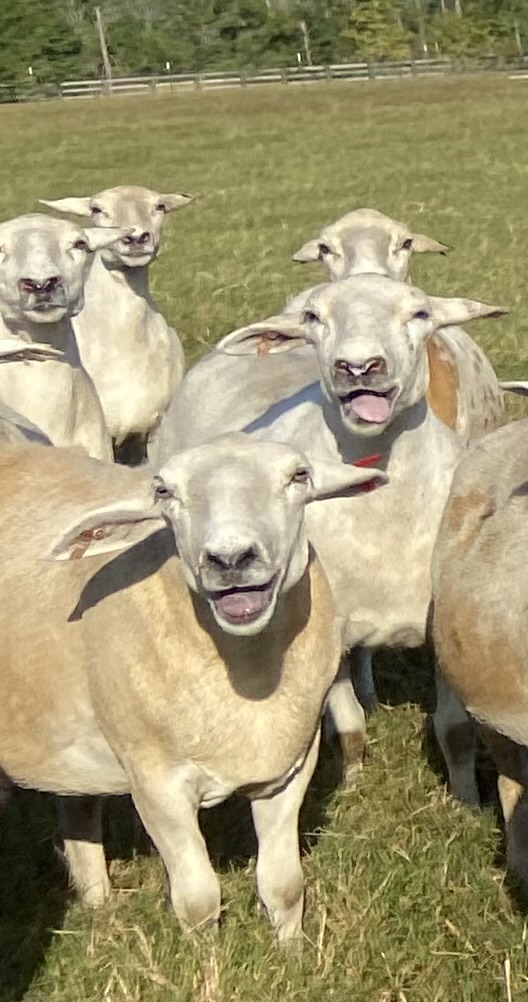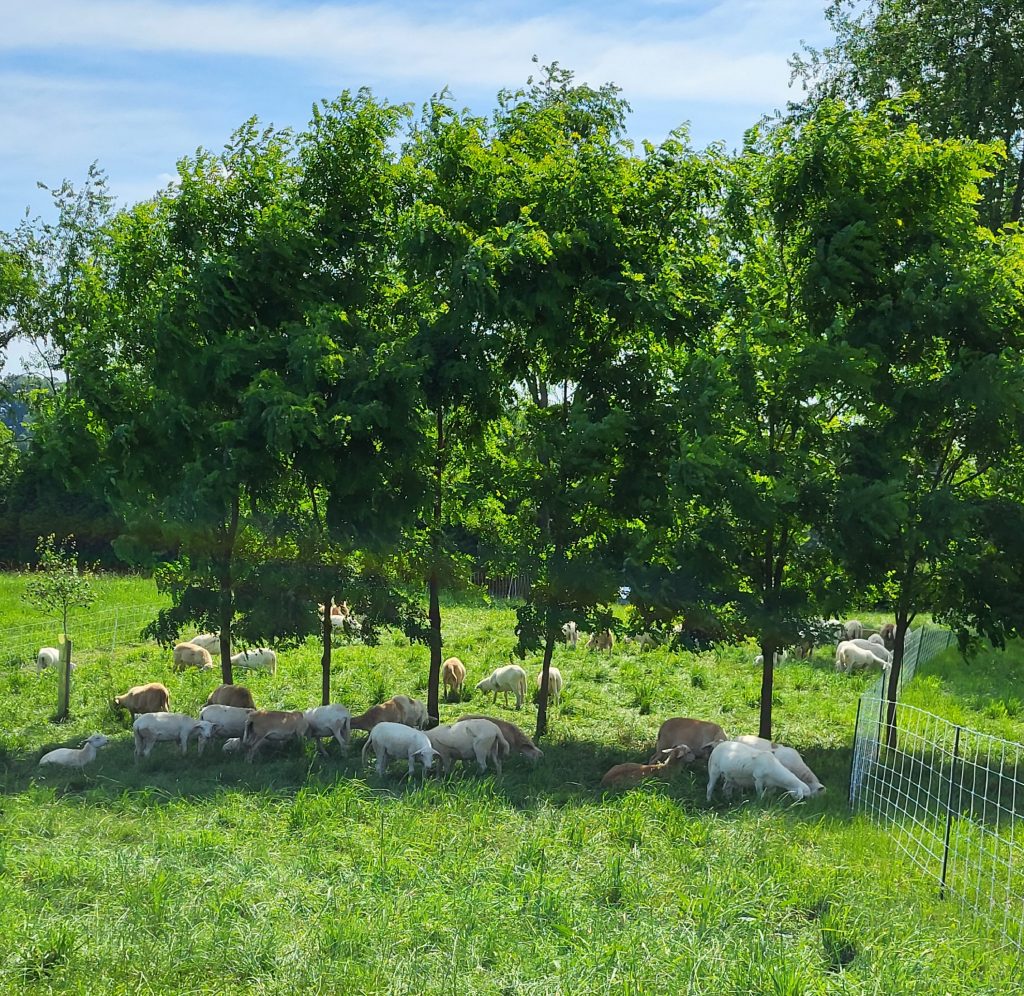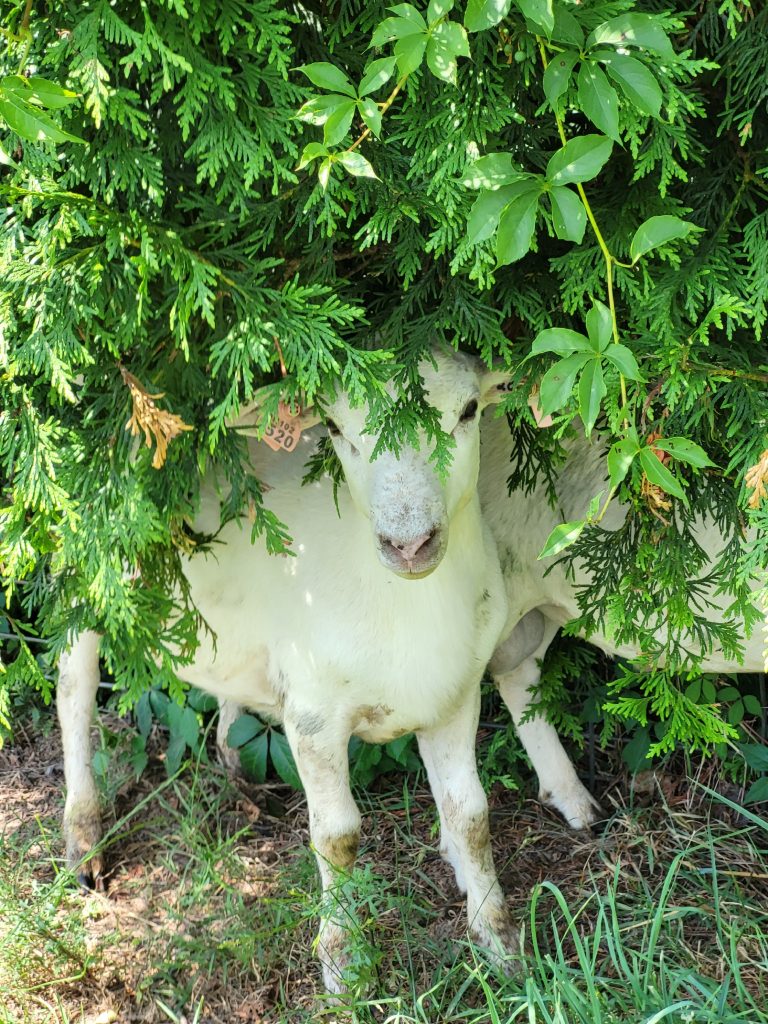Have you felt pretty beat up by the heat when you work outside for long hours in the summertime? Well, let me tell you that the summer heat does not only affect us, but also our flock. Imagine that you are training for a marathon at 100 degrees Fahrenheit with a quilted puffer jacket on. That is exactly how our animals feel when experiencing heat stress conditions. Heat stress is defined as when the ambient temperature and relative humidity increase to a point where it affects the animal’s capacity to dissipate their internal heat to the exterior, causing an increase in their body temperature. The thermoneutral zone for sheep is around 55 to 85 degrees Fahrenheit, meaning this is the optimal temperature range to keep them comfortable without expending extra energy to maintain their body temperature.

Rectal temperature is an indicator of core body temperature in multiple species. A healthy sheep’s rectal temperature typically falls within the range of 101 to 103.9 degrees Fahrenheit. Rectal temperatures above the normal range are frequently observed in heat-stressed animals and can be misinterpreted as fever. Sheep experiencing increased rectal temperature and exhibiting distress symptoms such as increased respiration rate (breaths per minute) and panting, require our immediate attention. During these circumstances, as owners and producers, we should understand our animals’ needs in order to provide the best care and avoid economic losses.
When the heat intensifies, sheep typically seek shade. This limits their grazing time. significantly reducing feed intake and affecting their growth. The reason they reduce their feed intake is to decrease the production of internal metabolic heat produced by the breakdown of feedstuff.
In the most commonly adopted sheep production systems in the southern United States, lambing occurs during the spring, and those lambs are finished during the summer. This is when you will likely see the negative impacts of heat on weight gain, preventing the lambs from reaching market size sooner. Heat stressed lambs finished during the summertime will typically exhibit decreased carcass weights along with smaller rib and loin chops, which clearly translate to less profit. In addition, changes to meat color and tenderness can negatively affect palatability, impacting the consumer experience. Undoubtedly, heat stress is detrimental, not only for the animals that you are intending to finish, but also to ram lambs that you are planning on using as sires in the next breeding season, as well as pregnant ewes that are potentially carrying your replacements.
Research has shown that heat stressed rams can experience infertility due to a decrease in sperm quality. Testicular temperature should remain 4 to 6 degrees below normal body temperature for proper spermatogenesis to occur. When we talk about spermatogenesis, we are referring to the process of sperm cell production which takes about 47 days in the ram. This means that heat stress can have a long-lasting impact on sperm cells, damaging their DNA, decreasing motility, altering morphology, and reducing concentration. Testosterone, the male sex hormone, is produced by cells in the testes. Heat stressed rams are known to exhibit decreased libido or sexual drive due to a decrease in testosterone production. Now, in the case that a sperm cell from a heat stressed ram fertilizes the oocyte (egg) of a ewe, we should question what would happen to the offspring. Will the damaged DNA carried over have a negative impact on the next generation?

This question remains as a novel area of research known as developmental programming, which states that any stimulus or insult during a critical period of time may have a permanent effect on that individual. For example, if a pregnant ewe experiences heat stress this can negatively impact the fetal growth and development, resulting in permanent physiological alterations of that offspring once it is born. The sheep gestation lasts 147 days and is divided into early, mid-, and late gestation. Early and mid- gestation account for only around 10% of fetal growth, whereas in late gestation the fetus grows the remaining 90% exponentially, making this a critical period increasing oxygen and nutrient demands. Moreover, during this time, the mammary gland from the ewe is undergoing growth and remodeling in preparation to nurse her lambs. Since we know that heat stressed animals decrease their feed intake, it is possible that heat stressed pregnant ewes put themselves in an inadequate plane of nutrition to avoid metabolic heat at the expense of fetal growth.
It’s possible that heat affects sperm cell DNA in rams, but more exploration is needed. Depending on the environment our animals are exposed to, there may be heritable changes in how genes are expressed without altering the DNA sequence itself; these are known as epigenetic changes. This would mean that our animals can have the best genetic potential based on our breeding selection, but depending on the environment they are in, genes may be turned off or on based on the needs of the animals. A great example is in dairy cattle; heifers whose dams were exposed to heat stress in utero were found to have fewer secretory cells in the mammary gland in their first lactation and produced less milk than the ones whose dams did not suffer heat stress. The most important thing is that epigenetic changes may be heritable and have a carry-over effect for future generations.

Producers concerned about the effects of heat stress can start by selecting heat resilient hair sheep breeds like Katahdins or Dorpers. Some recommendations to mitigate heat stress in our sheep include providing natural or artificial shade and placing water tanks in shaded areas so they can have access to cool water at all times. Fans can be used to improve ventilation in a closed barn. Producers can also provide supplements such as antioxidants. Understanding how the heat beats our sheep can help us improve management practices guaranteeing animal welfare and more profitable outcomes.
By Dr. Zully E. Contreras-Correa, Department of Animal Science, Tarleton State University
![]()

